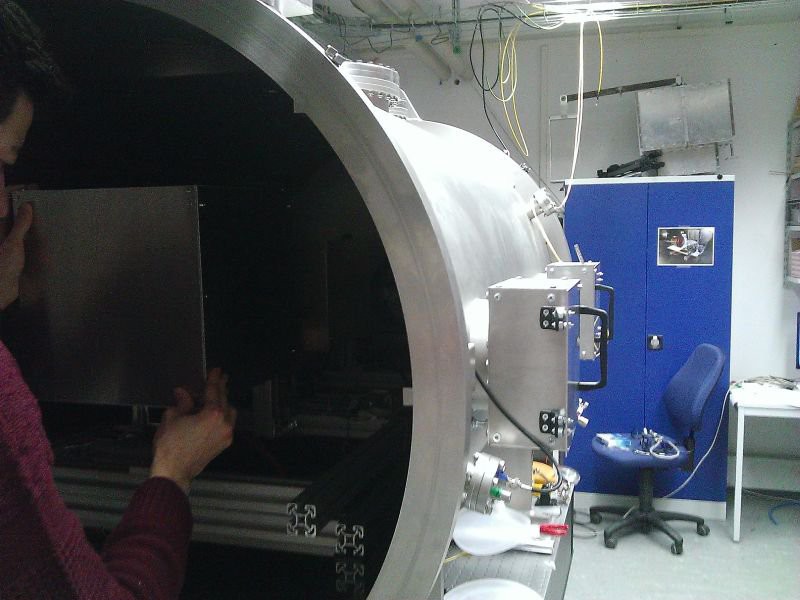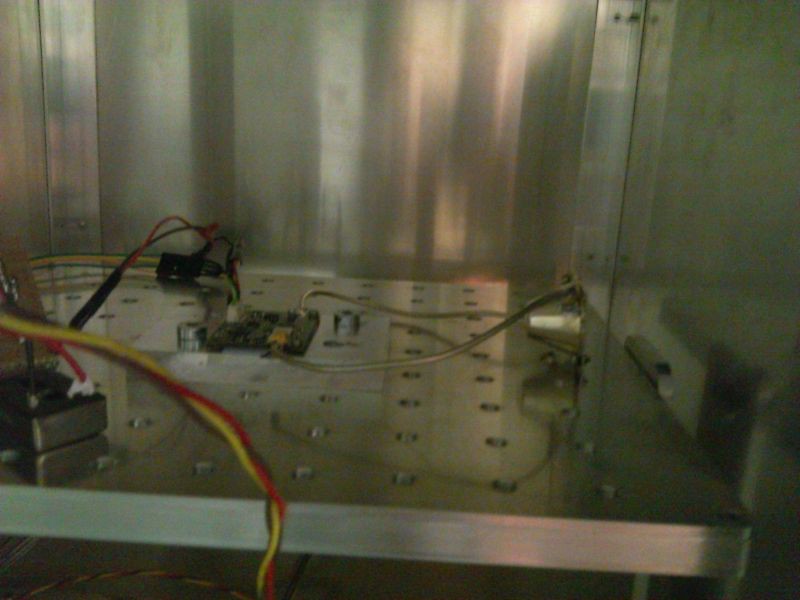In February the EMDrive V6 has been under test on the Technical University Dresden.
As the pretest-board didn´t output the expected power, I made a quick redesign right before the test date.
The output after a day in vacuum was around 500mW, that´s "only" 3dB less than the desired 1000mW. Not so bad for a simple 4-Layer board.
Here is the board inside the scale box: I am not allowed to publish detailed results, but some information upfront:
I am not allowed to publish detailed results, but some information upfront:
The thermal drift was much bigger than the possible thrust - anyway the force is depending on the frequency and seems - I say seems because that´ s only a quick observation - to be proportional to the amplitude of the resonance peaks.
I was only able to spend two days in Dresden so the following long duration tests has been made without my presence.
Possible forces are lower than 0.1µN, it´s still not 100% to say without eliminating the thermal drift, so we have to wait until this problem is solved.
The thermal drift shows always in the same direction and disturbs the interesting signal into uncertainty. So thrust is not confirmed but also not busted yet.
From my side - the Baby EMDrive is completed, unless an affordable amplifier with a significantly higher power appears.
There is an IAC abstract from Prof. Tajmar submitted about this EMDrive with details available on the conference beeing held in September this year in Australia.
Thanx to the many interesting discussions and suggestions.
Special thanx go to Prof. Tajmar, Matthias Koessling and Marcel Weikert for making the measurements possible, and Dave, who boosted the project by financial help - hope we get some thrust out of it so we can send it to space.
 Paul Kocyla
Paul Kocyla
Discussions
Become a Hackaday.io Member
Create an account to leave a comment. Already have an account? Log In.
Maybe you need to redesign the rf unit inside the cavity more like a directional RF transmitting antenna..
Just try to work from this principle, the original design was based on a fairly big wave, that needed a powerfull RF amp.
for instance adding a small 3-Blade Transmitting Antenna on the RF end might boost the amplification without pushing more power in the unit..
By the way, the new design of Roger Shawyer has a helical input antenna to boost the waves..
Are you sure? yes | no